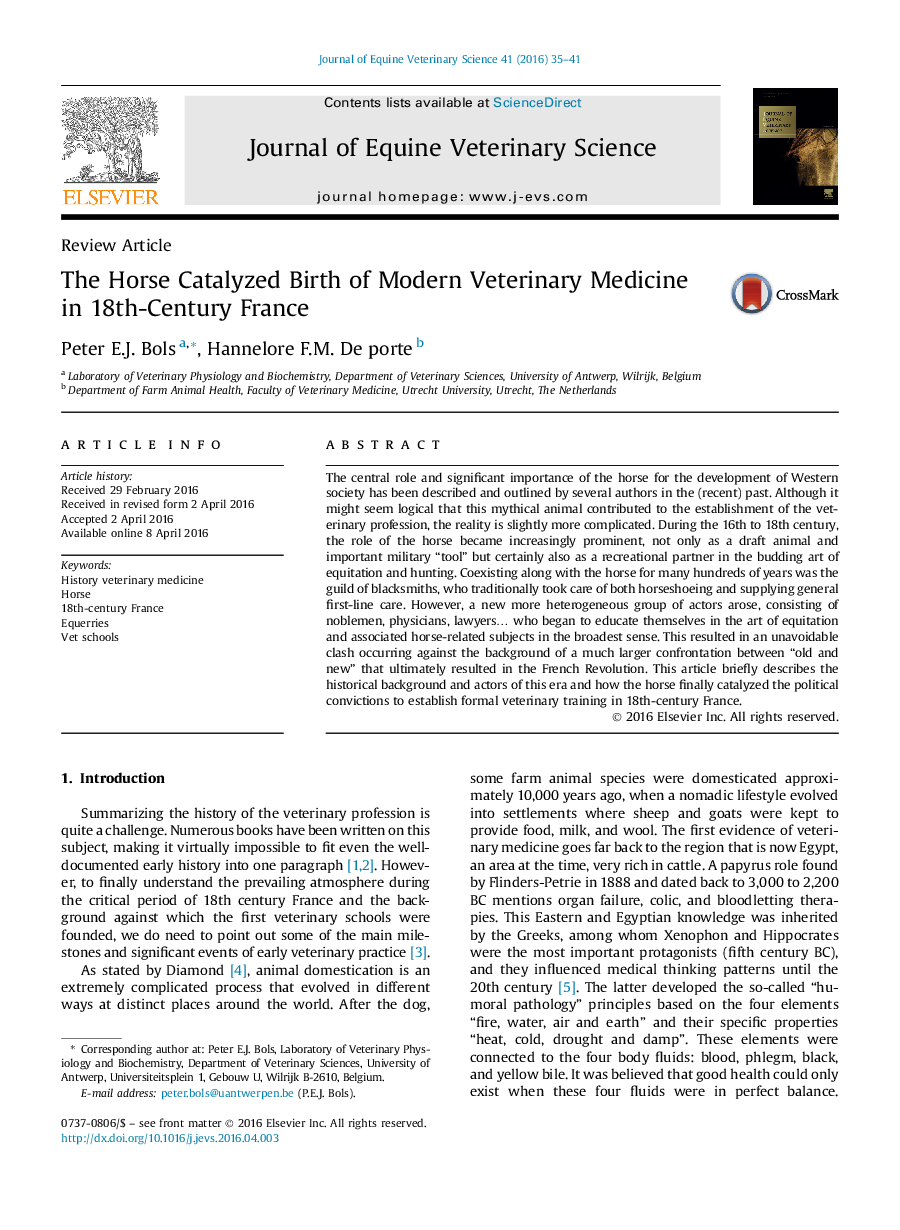| Article ID | Journal | Published Year | Pages | File Type |
|---|---|---|---|---|
| 2394436 | Journal of Equine Veterinary Science | 2016 | 7 Pages |
The central role and significant importance of the horse for the development of Western society has been described and outlined by several authors in the (recent) past. Although it might seem logical that this mythical animal contributed to the establishment of the veterinary profession, the reality is slightly more complicated. During the 16th to 18th century, the role of the horse became increasingly prominent, not only as a draft animal and important military “tool” but certainly also as a recreational partner in the budding art of equitation and hunting. Coexisting along with the horse for many hundreds of years was the guild of blacksmiths, who traditionally took care of both horseshoeing and supplying general first-line care. However, a new more heterogeneous group of actors arose, consisting of noblemen, physicians, lawyers… who began to educate themselves in the art of equitation and associated horse-related subjects in the broadest sense. This resulted in an unavoidable clash occurring against the background of a much larger confrontation between “old and new” that ultimately resulted in the French Revolution. This article briefly describes the historical background and actors of this era and how the horse finally catalyzed the political convictions to establish formal veterinary training in 18th-century France.
